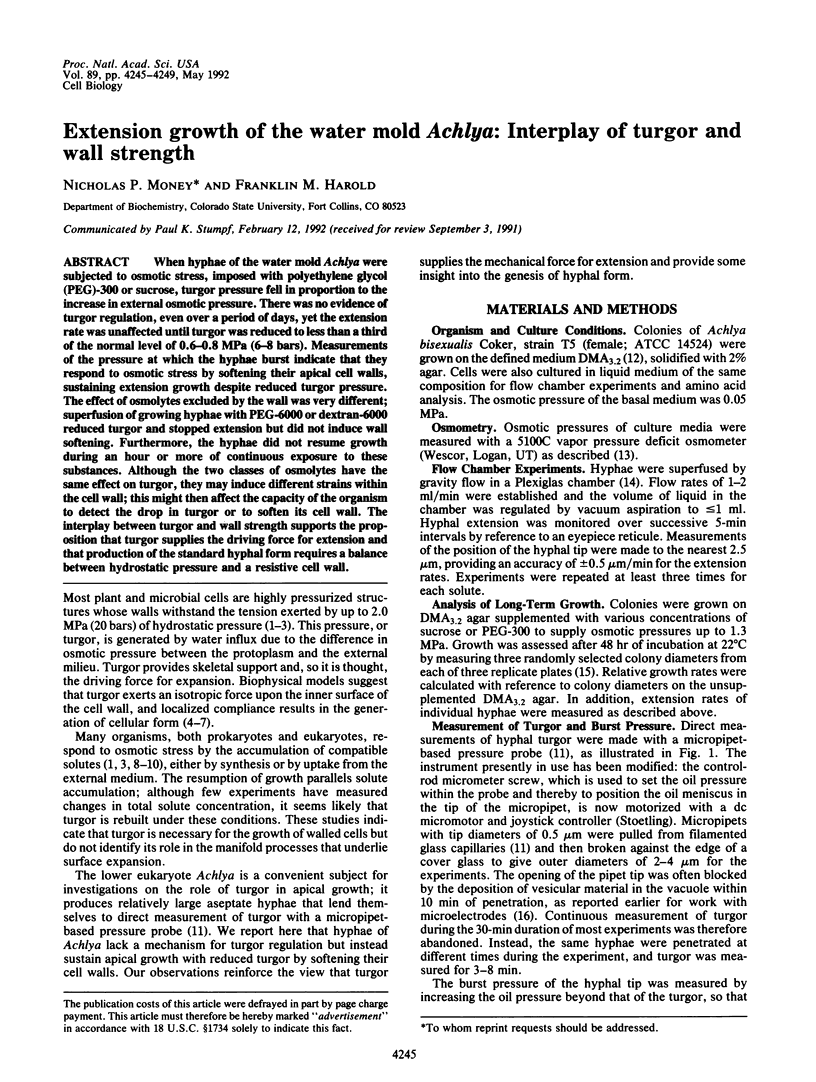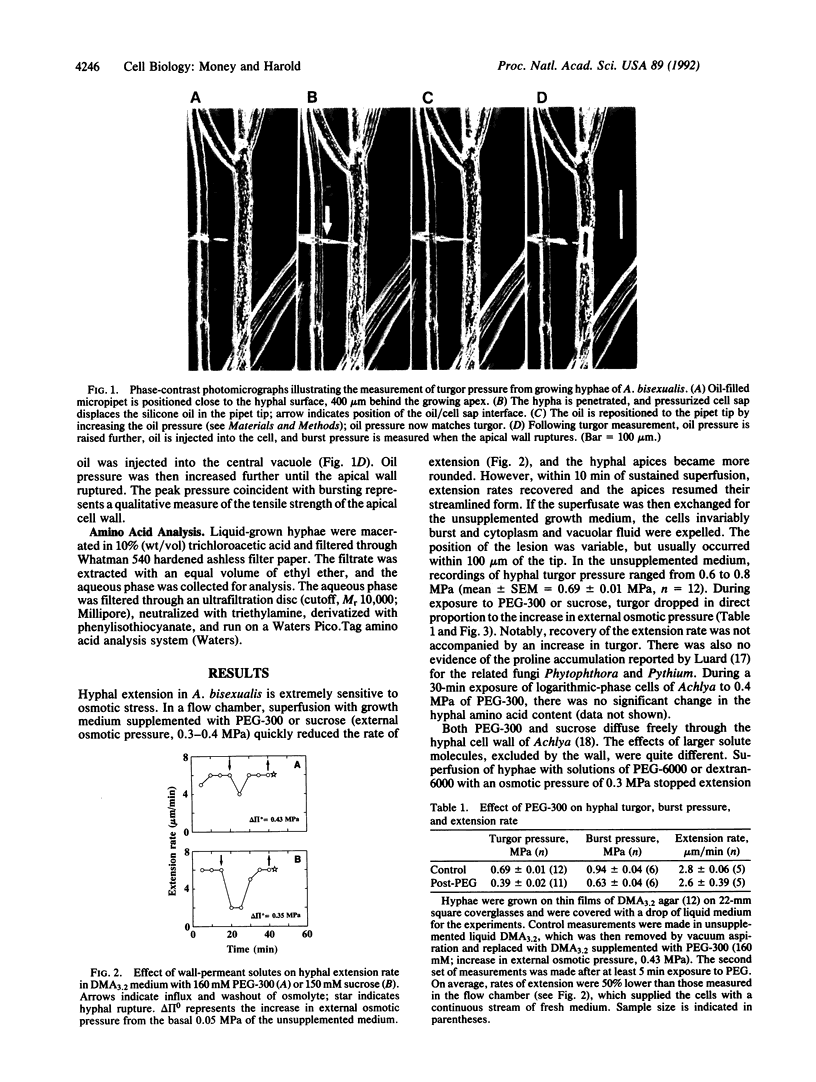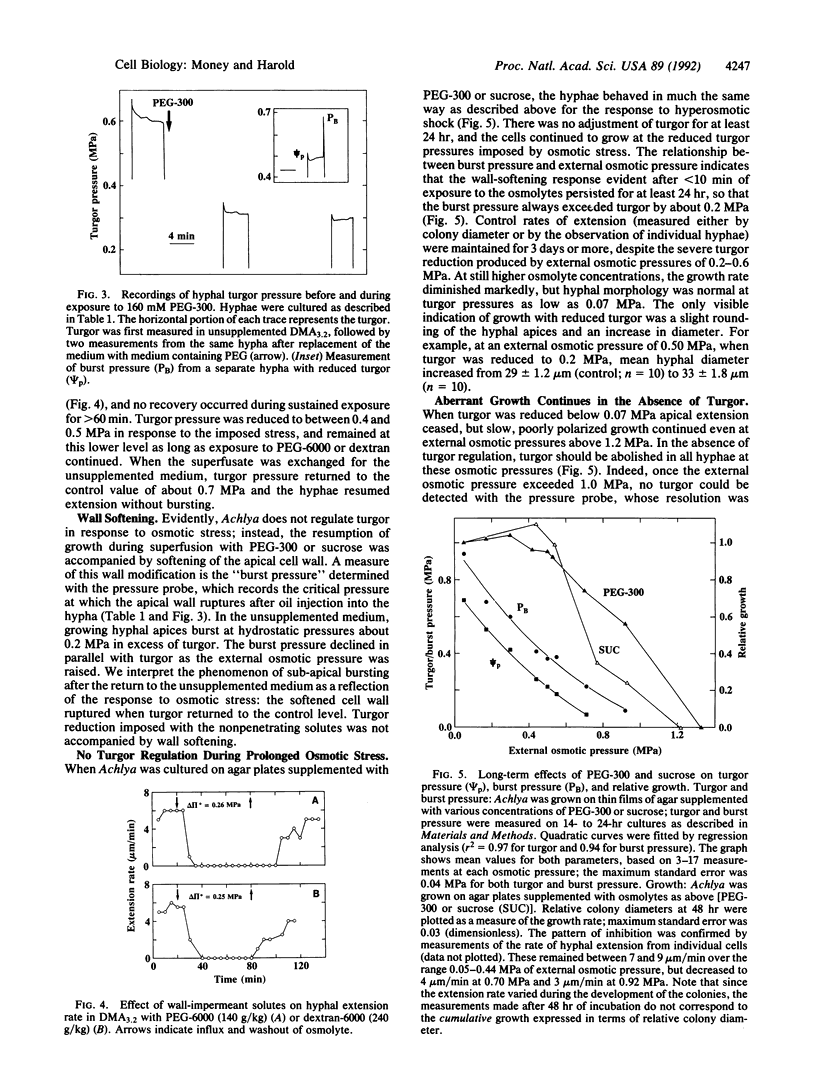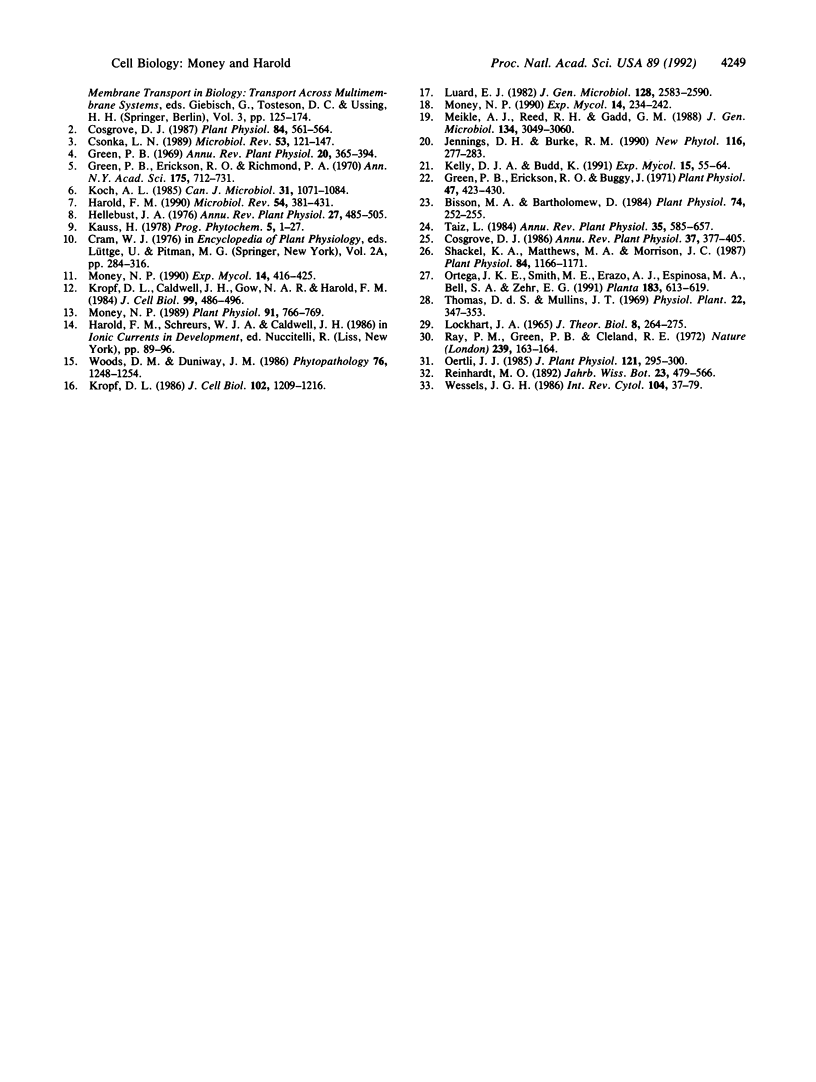Abstract
When hyphae of the water mold Achlya were subjected to osmotic stress, imposed with polyethylene glycol (PEG)-300 or sucrose, turgor pressure fell in proportion to the increase in external osmotic pressure. There was no evidence of turgor regulation, even over a period of days, yet the extension rate was unaffected until turgor was reduced to less than a third of the normal level of 0.6-0.8 MPa (6-8 bars). Measurements of the pressure at which the hyphae burst indicate that they respond to osmotic stress by softening their apical cell walls, sustaining extension growth despite reduced turgor pressure. The effect of osmolytes excluded by the wall was very different; superfusion of growing hyphae with PEG-6000 or dextran-6000 reduced turgor and stopped extension but did not induce wall softening. Furthermore, the hyphae did not resume growth during an hour or more of continuous exposure to these substances. Although the two classes of osmolytes have the same effect on turgor, they may induce different strains within the cell wall; this might then affect the capacity of the organism to detect the drop in turgor or to soften its cell wall. The interplay between turgor and wall strength supports the proposition that turgor supplies the driving force for extension and that production of the standard hyphal form requires a balance between hydrostatic pressure and a resistive cell wall.
Full text
PDF




Images in this article
Selected References
These references are in PubMed. This may not be the complete list of references from this article.
- Bisson M. A., Bartholomew D. Osmoregulation or turgor regulation in chara? Plant Physiol. 1984 Feb;74(2):252–255. doi: 10.1104/pp.74.2.252. [DOI] [PMC free article] [PubMed] [Google Scholar]
- Cosgrove D. J. Wall relaxation and the driving forces for cell expansive growth. Plant Physiol. 1987;84:561–564. doi: 10.1104/pp.84.3.561. [DOI] [PMC free article] [PubMed] [Google Scholar]
- Cosgrove D. Biophysical control of plant cell growth. Annu Rev Plant Physiol. 1986;37:377–405. doi: 10.1146/annurev.pp.37.060186.002113. [DOI] [PubMed] [Google Scholar]
- Csonka L. N. Physiological and genetic responses of bacteria to osmotic stress. Microbiol Rev. 1989 Mar;53(1):121–147. doi: 10.1128/mr.53.1.121-147.1989. [DOI] [PMC free article] [PubMed] [Google Scholar]
- Green P. B., Erickson R. O., Buggy J. Metabolic and physical control of cell elongation rate: in vivo studies in nitella. Plant Physiol. 1971 Mar;47(3):423–430. doi: 10.1104/pp.47.3.423. [DOI] [PMC free article] [PubMed] [Google Scholar]
- Harold F. M. To shape a cell: an inquiry into the causes of morphogenesis of microorganisms. Microbiol Rev. 1990 Dec;54(4):381–431. doi: 10.1128/mr.54.4.381-431.1990. [DOI] [PMC free article] [PubMed] [Google Scholar]
- Koch A. L. How bacteria grow and divide in spite of internal hydrostatic pressure. Can J Microbiol. 1985 Dec;31(12):1071–1084. doi: 10.1139/m85-204. [DOI] [PubMed] [Google Scholar]
- Kropf D. L., Caldwell J. H., Gow N. A., Harold F. M. Transcellular ion currents in the water mold Achlya. Amino acid proton symport as a mechanism of current entry. J Cell Biol. 1984 Aug;99(2):486–496. doi: 10.1083/jcb.99.2.486. [DOI] [PMC free article] [PubMed] [Google Scholar]
- Kropf D. L. Electrophysiological properties of Achlya hyphae: ionic currents studied by intracellular potential recording. J Cell Biol. 1986 Apr;102(4):1209–1216. doi: 10.1083/jcb.102.4.1209. [DOI] [PMC free article] [PubMed] [Google Scholar]
- Lockhart J. A. An analysis of irreversible plant cell elongation. J Theor Biol. 1965 Mar;8(2):264–275. doi: 10.1016/0022-5193(65)90077-9. [DOI] [PubMed] [Google Scholar]
- Meikle A. J., Reed R. H., Gadd G. M. Osmotic adjustment and the accumulation of organic solutes in whole cells and protoplasts of Saccharomyces cerevisiae. J Gen Microbiol. 1988 Nov;134(11):3049–3060. doi: 10.1099/00221287-134-11-3049. [DOI] [PubMed] [Google Scholar]
- Money N. P. Osmotic Pressure of Aqueous Polyethylene Glycols : Relationship between Molecular Weight and Vapor Pressure Deficit. Plant Physiol. 1989 Oct;91(2):766–769. doi: 10.1104/pp.91.2.766. [DOI] [PMC free article] [PubMed] [Google Scholar]
- Shackel K. A., Matthews M. A., Morrison J. C. Dynamic Relation between Expansion and Cellular Turgor in Growing Grape (Vitis vinifera L.) Leaves. Plant Physiol. 1987 Aug;84(4):1166–1171. doi: 10.1104/pp.84.4.1166. [DOI] [PMC free article] [PubMed] [Google Scholar]



